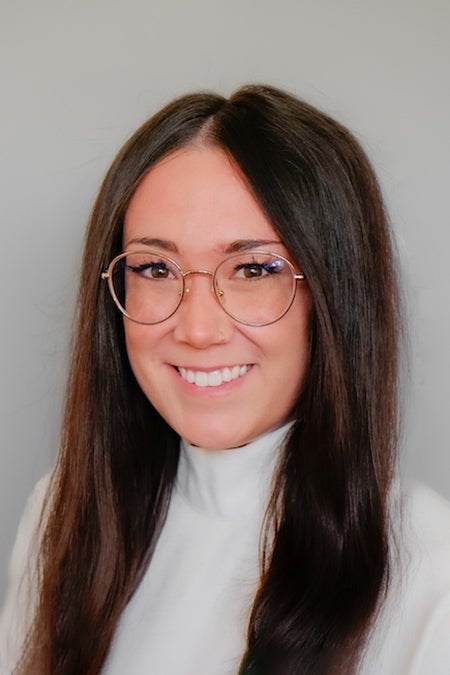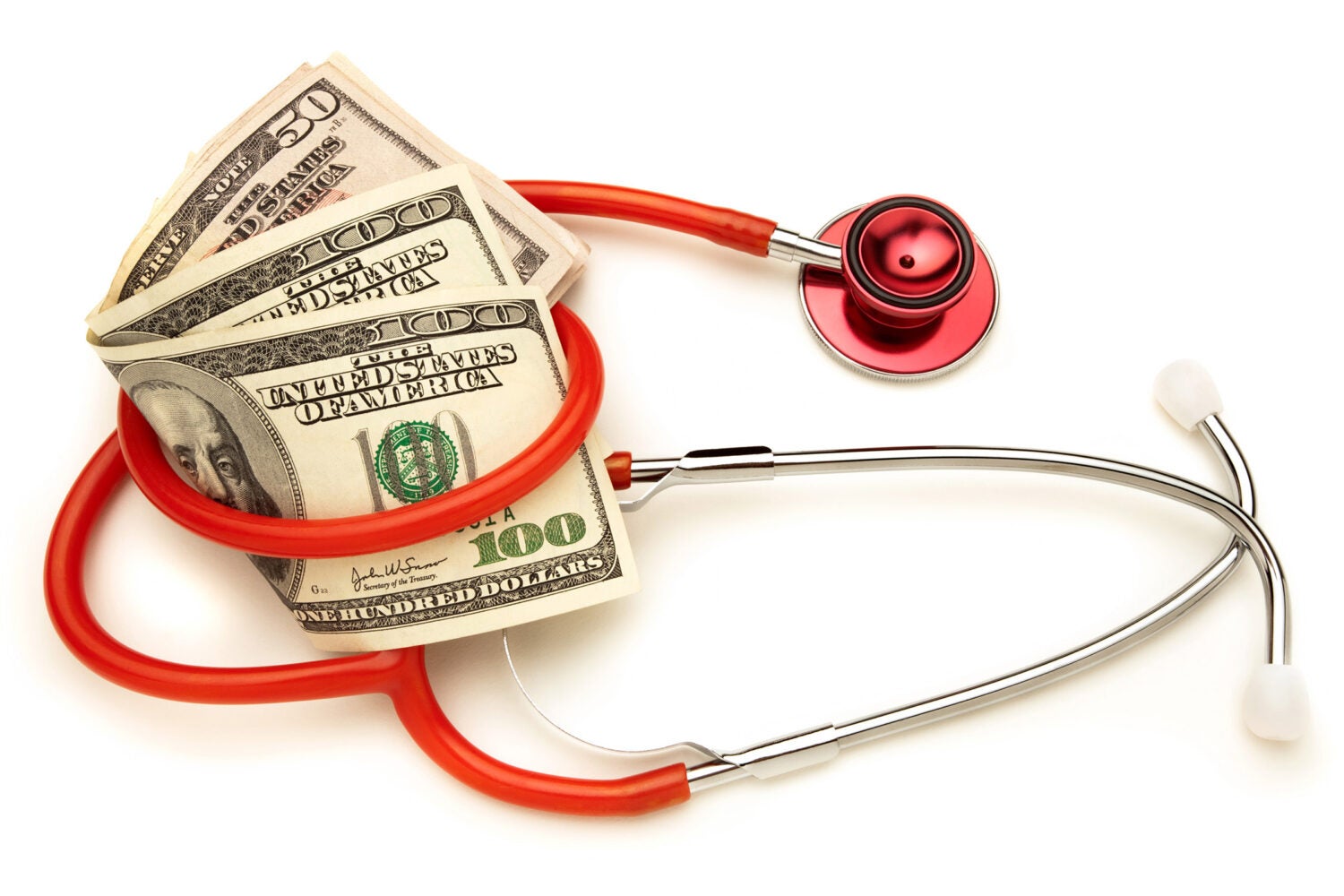Providing low-income families experiencing a health crisis with direct cash support can improve the outcomes of their medical treatment, reduce red tape, and save health care dollars, according to a new paper by a group of Harvard experts. Health outcomes are deeply influenced by social determinants, they write, many arising from poverty. The financial burden imposed by illness goes far beyond the cost of doctors, drugs, and hospitals. Patients or their parents often miss time at work and must travel to frequent medical appointments, sometimes with other children in tow. Access to housing and food may become more precarious. Few programs in the United States exist to meet these needs, and those that do are often bound in hard-to-cut red tape.
According to paper co-author Erika Hanson, a clinical instructor at Harvard Law School’s Center for Health Law and Policy Innovation, these social determinants often result in worse health outcomes compared to higher income patients experiencing the same illness and treatments. To address this challenge, Hanson and her colleagues, which include researchers at Harvard Medical School and the Harvard T. H. Chan School of Public Health, have a simple prescription: Provide families with cash and flexibility to address their childcare, food, housing, transportation and other needs. Harvard Law Today recently spoke to Hanson to learn more about how these health-related social needs drive medical outcomes, how direct cash transfer programs might help, the bureaucratic challenges, and how lawyers at Harvard and elsewhere are trying to help.

Harvard Law Today: Can you briefly summarize your findings in your new paper?
Erika Hanson: The paper is an exploration of the uses and needs for guaranteed income programs in health care settings, with a focus on the maternal health care space and the space of for severe childhood illness. At a very high level, what we found is that there are holes in our social safety net, and guaranteed income programs are flexible approaches to fill those holes and to address health disparities. But unfortunately, there are still some public policy barriers that are preventing the smooth implementation of those programs.
HLT: How did you get interested in this topic?
Hanson: At the Center for Health Law and Policy Innovation, we are interested in the social determinants of health, because they are the root causes of a lot of the health disparities that we see in outcomes. For instance, how does financial insecurity affect disparities in, say, childhood cancer outcomes, or maternal and infant mortality? And what kind of health care interventions can address those root causes? One very promising approach is guaranteed income programs that give individuals money so they can address their core needs on the front end, rather than only addressing health crises on the back end. Because if those core needs aren’t addressed for some individuals, the likelihood that their health care treatments will succeed is less. Because that is a focus of our center’s work, we were approached by several different guaranteed income programs when they were running into legal and policy problems in implementation to help them structure programs to be seamless for trial participants, so they work as best as possible.
HLT: Speaking of financial insecurity, you wrote in the paper that a surprising percentage of children live in homes with families below the federal poverty line. Can you talk a little bit about some of the causes and how that compares with other high-income countries?
Hanson: In 2021, one in six children in America were living in poverty. And those statistics have doubled in the last year, due in part to the expiration of some COVID-era benefits, like the Child Tax Credit and expanded food benefits under SNAP, formerly known as food stamps. When we dig a little deeper, we find that problems like food insecurity are extremely high in this country, compared to other developed nations. We also see that, not only are the levels of need affecting health outcomes higher here, but the ways our healthcare system addresses these issues are also different. We don’t spend a lot of money addressing root causes, whereas other highly developed countries do tend to spend more money making sure that individuals’ needs are addressed at that base level.
HLT: You write that some states are already trying to address these concerns. How so?
Hanson: There’s a lot of innovation right now, which is wonderful. Several states are trying to screen for health-related social needs. If individuals in healthcare settings show signs of food or housing insecurity, health care providers in some states can screen for those needs and refer them to community-based organizations that can help. Other states are trying more intensive interventions. Here in Massachusetts, for instance, we are paying for individuals’ housing and food needs through Medicaid. So, not only are we doing that screening, but then if an individual screens positive for, say, food or housing insecurity, Medicaid can pay for them to get medically tailored food or housing supports. These are just some of the exciting innovations we’re seeing.
But as our paper points out, for individuals experiencing an acute health crisis, like we see for pediatric patients and their families that are going through a cancer crisis, or for individuals who have a baby that needs to be hospitalized in a neonatal intensive care unit, or NICU, those supports don’t necessarily come at the right time or in the right form. You may not need food at that time, but you may need help with transportation, or accommodation, or childcare for other children so that you can care for your sick child. So, we’re still seeing holes, even in innovative programs. And that’s where guaranteed income programs can step in and help acute need families.
HLT: How would direct cash transfers address some of these underlying social determinants in health outcomes?
Hanson: It’s an elegantly simple solution to a difficult problem. In short, individuals who are experiencing health crises simply receive, whether it’s weekly or monthly, a cash payment. They can then use the money to pay for needs in their lives that will impact the success of the health care they are receiving. Many recipients tend to use it for transportation. If you think about when you get sick, and particularly when you get sick with a specialized need, you’re having to drive or take the train a lot to get to frequent medical appointments. That’s an added expense. A lot of individuals also use the money for childcare for other children, so they don’t have to uproot their other children to go with them to multiple health care appointments every week. They can use it for accommodation to stay closer to where they are receiving health care. Individuals get to use it for whatever they need, whenever they need it.
HLT: How will you know if this approach really works?
Several randomized clinical trials are testing to see if giving individuals guaranteed income will affect health outcomes. We know that disparities in health outcomes exist, meaning we know that health treatment outcomes vary based on poverty and other social factors we’ve talked about. These trials are testing whether the guaranteed income affects that disparity — whether giving these individuals, who are usually 200% below the federal poverty line, guaranteed income funds improve health care outcomes. In one of the trials, the payment is equal to the amount of the Earned Income Tax Credit expansion that Congress approved during the pandemic, but which has since expired. So, in effect, for trial participants, it is replacing a federal benefit that was lost, and individuals can use that money to pay for whatever they need when they need it. The benefit is also time bound. In another trial involving families with a newborn in the hospital, for example, it’s time bound for the amount of time the child is in the NICU. So, it isn’t an open-ended benefit but specifically targeted at lower-income families experiencing a health care crisis.
HLT: I’ve read a lot in recent years about efforts by cities and towns to provide citizens with universal basic income, essentially a program under which every adult receives a set amount of money on a regular schedule. Is the approach you’re describing based on the same principle?
Hanson: Yes, it’s extremely similar. The only differences here are that it’s in a healthcare setting and recipients must meet certain eligibility criteria; namely, there must be an illness. A universal basic income typically applies to everyone, for instance, everyone living in the pilot city.
HLT: You write that, despite the cost of providing the direct cash transfers, these programs save taxpayers money. How does that work?
Hanson: We already know that poverty is a driving factor for mortality and morbidity. Even if individuals struggling with poverty are getting expensive, top of the line medical treatment, their outcomes are not going to be as good. They’re going to have to keep going into the hospital to treat worse outcomes compared to their counterparts, and we’re going to see higher costs of care for these individuals. Keeping those individuals healthier from the outset by spending a little money now should help us realize major health care cost savings later.
HLT: What challenges do you foresee in implementing these types of programs?
Hanson: These programs are beautifully simple. But the reason why my colleagues and I are involved as lawyers is that our social safety net system is not simple. And unfortunately, one of the biggest barriers to guaranteed income programs or universal basic income programs is something called the benefits cliff. A lot of our social safety net programs — SNAP or Medicaid, for instance — have low-income requirements. Consequently, an individual can receive a tiny increase in their income and as a result, lose their government benefits. That’s a huge pitfall for that individual or family. By providing this money to people during a health care crisis for them or their family members, we don’t want to cause them to lose their other means of support.
As lawyers, we’ve been working to get waivers from these income requirements, and to explain that these programs fall into special categories that do not qualify as income, but as gifts to help people address a personal or family health crisis. But we need a bigger public policy fix. And there are some states that are trying to address this. For instance, New York passed legislation in 2022 that exempts all guaranteed and universal basic income pilots that are studying the impact of this work from their public benefits programs. That’s wonderful, but a federal solution would be much better so that the same rules would apply in every state. A lot of people are working on this, but it takes a lot of work from us lawyers to get waiver by waiver, state by state, and agency by agency. That’s a big barrier to success.
HLT: What would you say to folks who might be skeptical of the idea of handing out money to low-income families with no strings attached? Is there a concern that the money could be used inappropriately?
Hanson: This is a question that opponents often raise. Randomized control studies and meta-analyses of studies have looked into this. And they’ve found that there’s just no evidence of individuals spending money on things like tobacco or alcohol, or other items that would be working against healthcare outcomes. So far, the weight of the evidence is that those concerns are without merit. And as we continue to do clinical trials, that’s something that researchers are monitoring.
Want to stay up to date with Harvard Law Today? Sign up for our weekly newsletter.
